DIVING TAKES PLACE in an environment that is dynamic both in and out of the water. Challenging and changing situations can happen even while traveling to a dive site. Balance exercises can help improve your ability to maintain or regain stability on a rocking boat. Wearing scuba gear changes your weight distribution and center of gravity, so improved balance is beneficial for comfortable dive preparation and fall prevention.
The American College of Sports Medicine recommends neuromotor exercises involving balance (such as the ones in this circuit) two to three days per week. Incorporating balance training with exercise activities can benefit divers of any age by helping to improve performance and reduce the risk of falling.
Most activities that keep you on your feet naturally help you maintain balance, but the targeted exercises in this circuit can further improve your stability. These unilateral exercises isolate each side of your body, so your dominant side cannot compensate for any potential weakness. This type of program will develop body awareness while balancing your strength and range of motion in a variety of planes of movement.
Complete all of the exercises for one circuit, and then try to build up to three full circuit rotations. This is unilateral training, so make sure you do the exercises the same number of times on each side of your body.
Single-Leg Toe and Heel Raises
- Stand near a stable chair.
- Put your weight on your right leg.
- Gradually lift your left leg off the floor until your thigh is parallel to the floor. You can leave your toe hovering just off the floor if necessary.
- Lift your right heel to balance on your toes, and hold that position for five seconds.
- Slowly bring your heel down to the floor.
- Transition your weight to your heel.
- Lift your toes off the ground, and hold that position for five seconds.
- Complete 10 repetitions using your right leg.
- Repeat the sequence 10 times using your left leg.
Tip:
Focus on a stationary
object at eye level.
Modification:
Hold a stable chair or
wall to help your balance.
Challenge:
Try the same routine
on a balance disk.

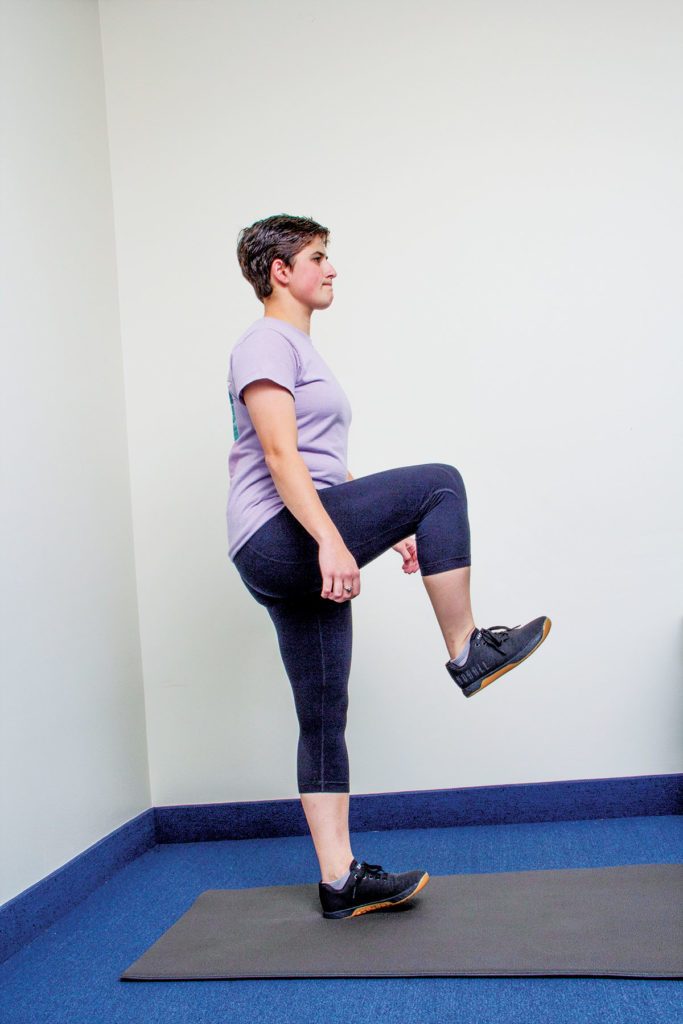
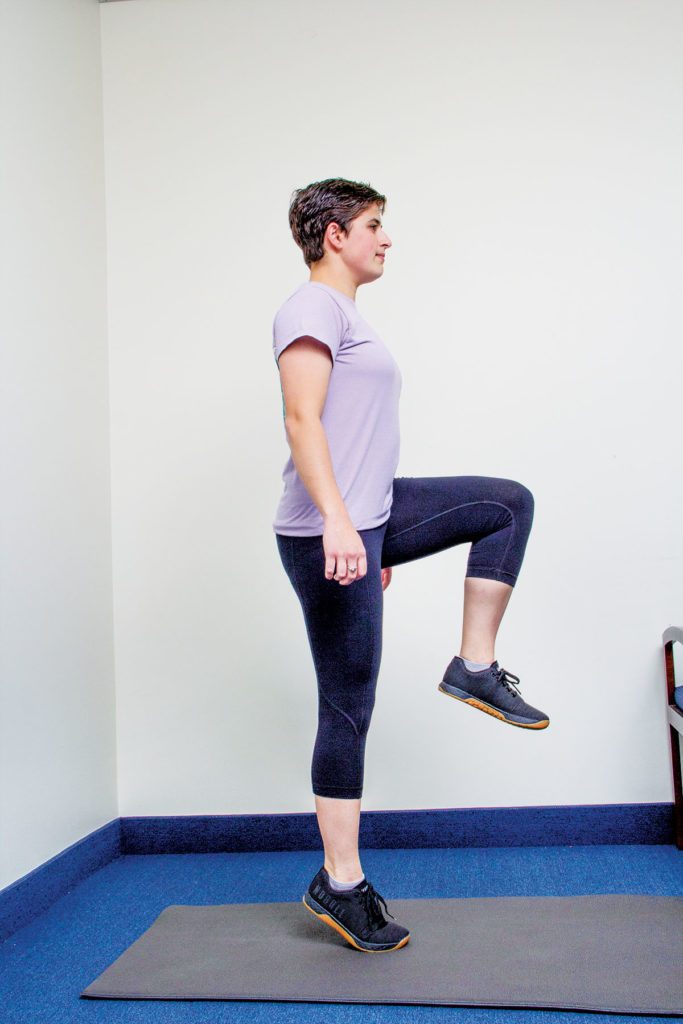
Single-Leg Balance to Wall Touch
- Stand facing a wall about 1 foot beyond arm’s distance from the wall.
- Transition your weight to your right foot.
- Maintain a slight bend in your right knee.
- Bend at your hip (not your back) until your fingertips touch the wall.
- Return to an upright position without allowing your left foot to touch the ground.
- Complete 10 repetitions using your right leg.
- Repeat the sequence 10 times using your left leg.
Tip:
Keep your chest up, and maintain eye contact with the wall above where you touch.
Modification:
Start closer to the wall.
Challenge:
Start farther from the wall.
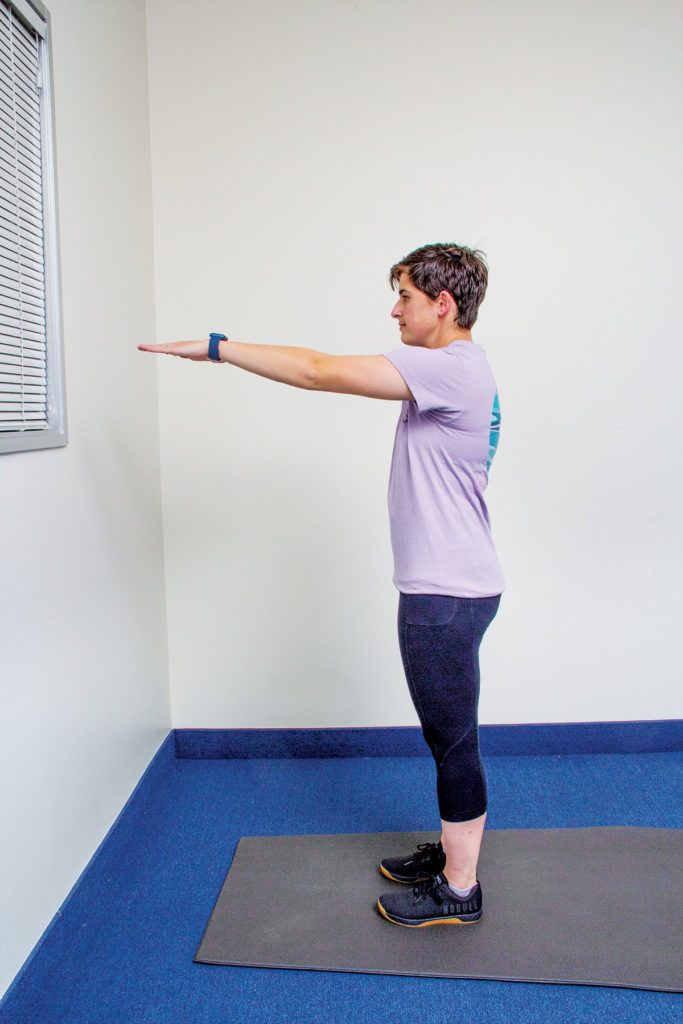
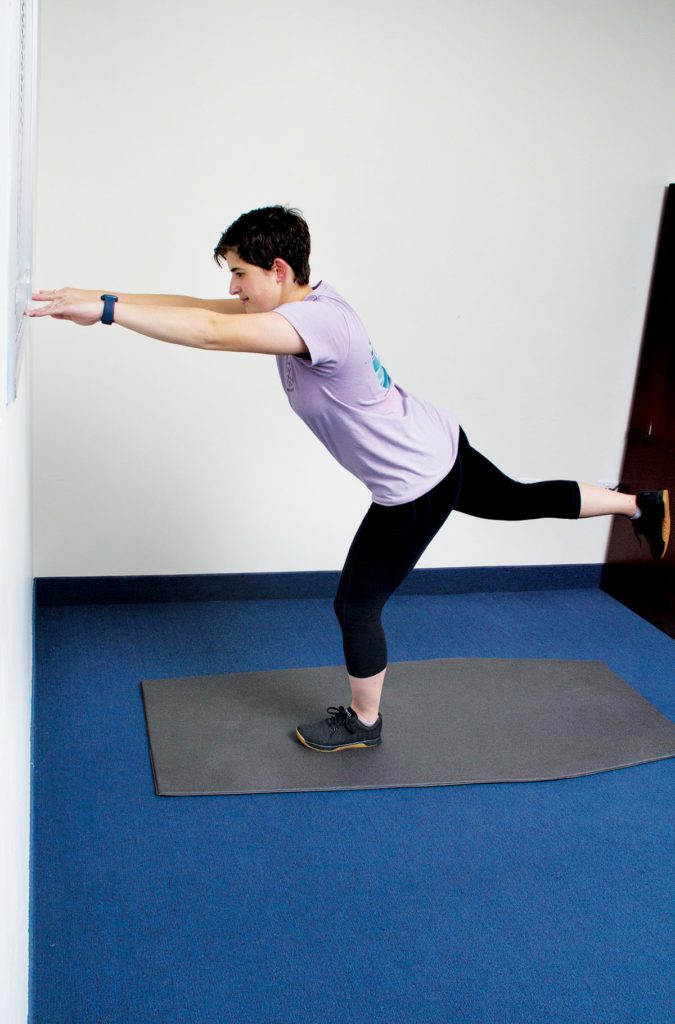
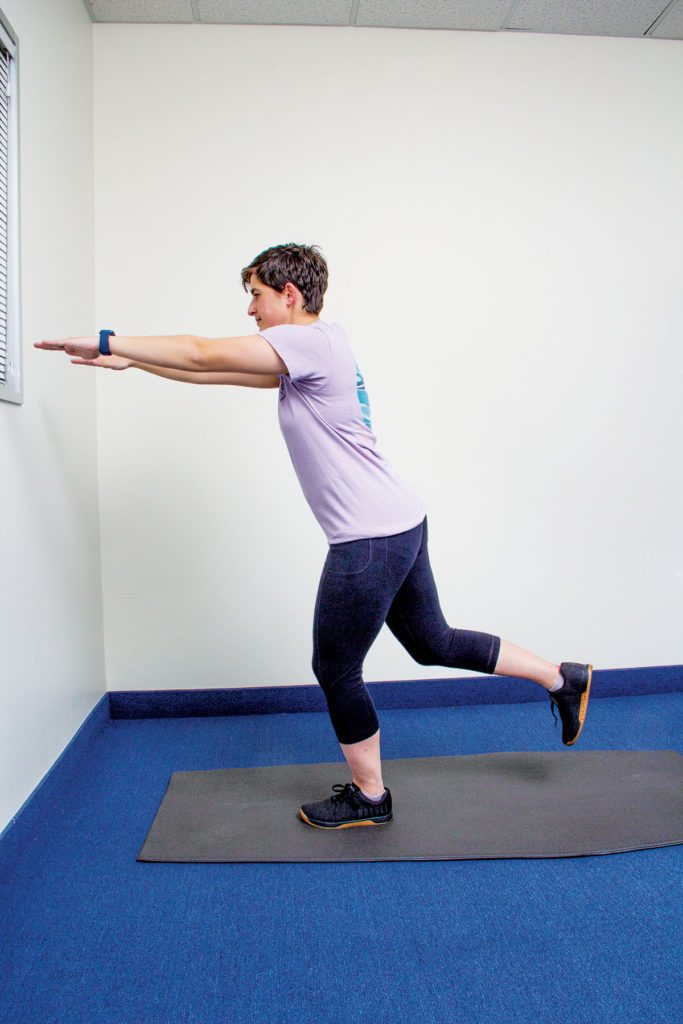
Hip Abduction
- Stand behind a stable surface such as a chair or countertop, which you can use as needed for balance.
- Transition your weight onto your right foot.
- Abduct your left leg by moving it away from your body at the hip joint while keeping your toes pointed up.
- Move your leg as far out as possible while keeping your upper body straight.
- Hold the position for two seconds.
- Return to the starting position.
- Complete 10 repetitions standing on your right leg.
- Repeat the sequence 10 times standing on your left leg.
Tip:
Maintain a slight bend in your standing leg, and keep your eyes focused on a point in front of you.
Modification:
Hold a stable surface with one or both hands.
Challenge:
Try holding the position for up to 10 seconds.
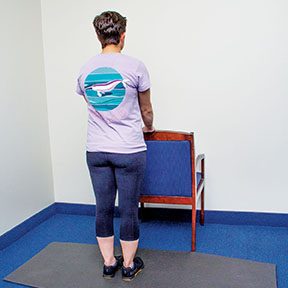
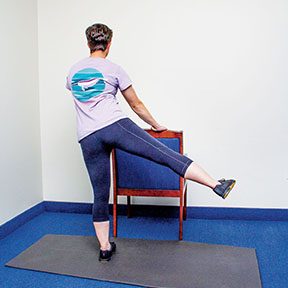
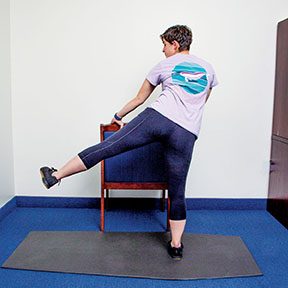
Side Plank Hip Drop
- Start by lying on your right side, propped on your elbow.
- Place your left hand on your left hip.
- Lift your right hip off the ground, and hold the position for five seconds.
- Slowly lower your right hip to the ground.
- Complete 10 repetitions on your right side.
- Repeat the sequence 10 times on your left side.
Tip:
Find a comfortable place for your forearm to rest, such as a towel, a yoga mat, or a carpet.
Modification:
Bend your knees, and put your weight on your knees instead of your feet.
Challenge:
Tap the floor between repetitions instead of allowing a complete rest.
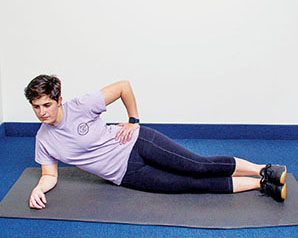
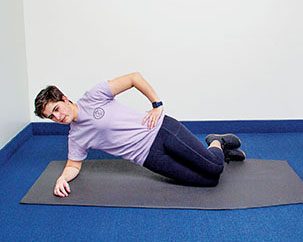
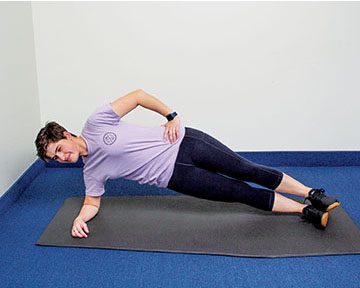
Foot Circle Drag
- Stand within reach of a wall or stable object.
- Transition your weight onto your right foot while maintaining a slight bend in your right knee.
- Make five large circles with your left foot while bending your right knee. Keep your left foot in contact with the ground.
- Reverse the direction for five large circles.
- Repeat the sequence 10 times while standing on your left leg.
Tip:
Keep your back straight, and stay near a stable surface in case you lose your balance.
Modification:
Stand more upright, and make smaller circles with your foot.
Challenge:
Squat deeper into the position, and make larger circles with your foot.
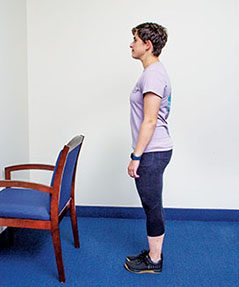

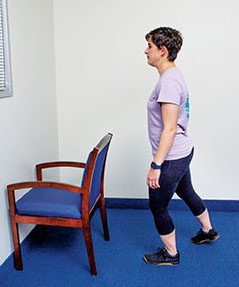
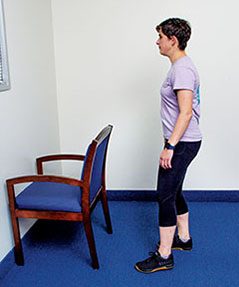
NOTE: To avoid an increased risk of decompression sickness, DAN® recommends that divers avoid strenuous exercise for 24 hours after making a dive. During your annual physical exam or following any changes in your health status, consult your physician to ensure you have medical clearance to dive.